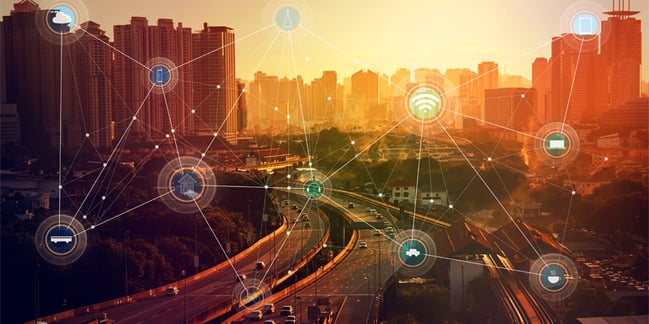
For many cities and heavily populated urban areas, there is always an element of crime that is to be expected, even with the very best law enforcement in place. In an effort to reduce crime and attract more businesses, many cities are understanding the wise investment in Smart City technology, and the safety that comes with it.
Examining five of North America's safest cities, there was one striking similarity: they were all invested in smart city technology. Seattle and Boston, both leading the pack, start off the list of cities that demonstrate how Smart City systems can help your city flourish - as well as examples of how a lack of Smart City systems might be holding you back.
Analyzing polls from the Wall Street Journal to Forbes, Seattle and Boston came in at a tie for the safest of the Smart Cities of 2016. Seattle, long recognized as being one of the most pedestrian-friendly and accessible cities in North America, has taken strides to provide their citizens with new safety features and crosswalks based on data collected throughout the metropolis's intersections and roadways. They have also implemented the Pedestrian Master Plan, incorporating safety measures for biking and transit which will deliver a higher level of security for this already pedestrian-friendly town.
“Data has the potential to drive innovation and efficiency, improving both our quality of life and economic productivity. Unlocking the promise of a smart, data-driven city requires a focus on data governance, consistent tools that facilitate cross-department collaboration, and educating the public on how to leverage the City’s resources.” —Michael Mattmiller, Chief Technology Officer for the City of Seattle
Boston has also initiated "Complete Streets" in an effort to build a safer and more accessible grid of roadways that prove more welcoming to citizens, and the initiative is adjusted depending on the neighborhood and its specific needs. Not coincidentally, Seattle and Boston rank number one as the safest cities for pedestrians thanks to their investment in Smart City technology. To find more information on the benefits of collecting data, particularly from smart video analytics, read more about the topic here.
San Francisco was also high on the list of safety thanks in large part to its investment in gunshot detection software. With gun violence becoming a growing concern of the city's law enforcement agencies, the city installed the shot detection sensors. Between 2014 and 2016, the city has seen a 34% reduction in gunfire. The city with the biggest drop, however, was Huntington Station, NY, which saw a 50.2% reduction. The software is proving to be invaluable to not only solving crime, but preventing it from occurring. Washington DC also experienced benefit from aggression detection software, registering hundreds of gunshots and their locations during an initial test of the software that would have otherwise gone unreported by witnesses. After implementing the software, Washington DC saw a decrease in various types of crime including gun violence in the years that followed. Following a recent outbreak of gun violence, Seattle is rallying to implement gunshot detection systems to improve safety and reduce crime after witnessing the benefits in other cities.
New York City, which has worked on implementing numerous Smart City systems, has proposed seven different ways in which they can improve on the quality of life and safety of the millions of residents and visitors that populate the island daily. Some of the improvements include the Lowline (an underground sunlit park promoting green space), a bike-sharing program, and citywide Wi-Fi. The Mass Transit Association (MTA) is also looking to upgrade the subway system to Communications-based Train Control, a massive undertaking that turns control of train speed and function over to technology on each train, reducing possible instances of human error and promoting a timely train schedule for the city's millions of commuters. In neighborhoods particularly susceptible to poverty, the city government has backed an initiative that opens computer centers in those neighborhoods and empowers residents with employment opportunities and a chance to increase digital literacy. Managing to implement safer and healthier city systems in such a limited and overpopulated space has proven to be better for security, as New York has experienced a steady drop in violent crime during the past few years.
Of course, many other cities with reduced populations have earned the "Safest Places to Live" title throughout the country, such as Sunnyvale, Ca., which has some of the lowest rates of auto fatalities, drug use, and violent crime in the country following a gun safety ordinance implemented in 2013. The ordinance put regulations in place for safely storing firearms, guidelines for reporting stolen or missing guns in a timely manner, and banning the manufacturing or sale of high-capacity magazines without infringing on the Second Amendment. In addition to law enforcement, safety and security measures throughout California and Texas have made the two states leaders in their total number of safe cities. Smart City technology is on the rise throughout many of these cities, demonstrating a clear benefit to security.